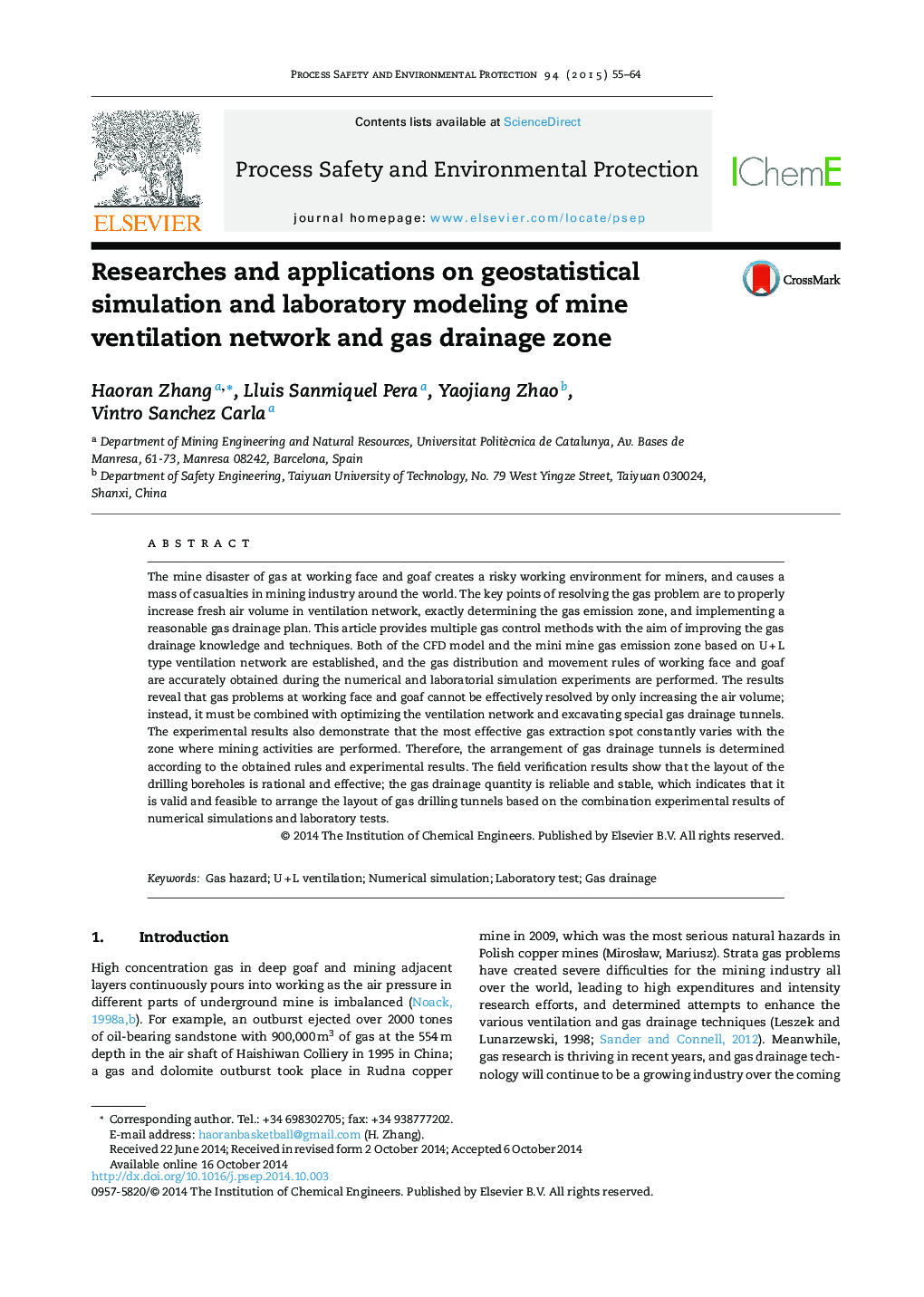| Article ID | Journal | Published Year | Pages | File Type |
|---|---|---|---|---|
| 6974463 | Process Safety and Environmental Protection | 2015 | 10 Pages |
Abstract
The mine disaster of gas at working face and goaf creates a risky working environment for miners, and causes a mass of casualties in mining industry around the world. The key points of resolving the gas problem are to properly increase fresh air volume in ventilation network, exactly determining the gas emission zone, and implementing a reasonable gas drainage plan. This article provides multiple gas control methods with the aim of improving the gas drainage knowledge and techniques. Both of the CFD model and the mini mine gas emission zone based on UÂ +Â L type ventilation network are established, and the gas distribution and movement rules of working face and goaf are accurately obtained during the numerical and laboratorial simulation experiments are performed. The results reveal that gas problems at working face and goaf cannot be effectively resolved by only increasing the air volume; instead, it must be combined with optimizing the ventilation network and excavating special gas drainage tunnels. The experimental results also demonstrate that the most effective gas extraction spot constantly varies with the zone where mining activities are performed. Therefore, the arrangement of gas drainage tunnels is determined according to the obtained rules and experimental results. The field verification results show that the layout of the drilling boreholes is rational and effective; the gas drainage quantity is reliable and stable, which indicates that it is valid and feasible to arrange the layout of gas drilling tunnels based on the combination experimental results of numerical simulations and laboratory tests.
Related Topics
Physical Sciences and Engineering
Chemical Engineering
Chemical Health and Safety
Authors
Haoran Zhang, Lluis Sanmiquel Pera, Yaojiang Zhao, Carla Vintro Sanchez,
